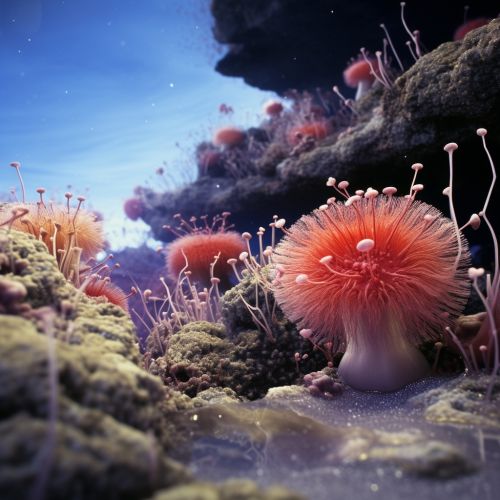Mechanisms of Microbial Community Assembly in Extreme Environments
Introduction
Microbial communities are the foundation of life on Earth, driving the planet's biogeochemical cycles and supporting the existence of higher organisms. In extreme environments, these communities face unique challenges, requiring specialized adaptations and complex interactions to survive and thrive. The assembly of these communities is governed by a combination of deterministic and stochastic processes, which shape their structure and function. This article delves into the mechanisms of microbial community assembly in extreme environments, providing a comprehensive overview of the processes involved and the factors that influence them.
Extreme Environments
Extreme environments are characterized by conditions that are inhospitable to most forms of life. These can include high or low temperatures, high salinity, extreme pH levels, high radiation, deep-sea hydrothermal vents, and other conditions that push the limits of biological survival. Microorganisms that inhabit these environments, known as extremophiles, have evolved a range of adaptations that allow them to survive and even thrive under these conditions.
Mechanisms of Microbial Community Assembly
The assembly of microbial communities in extreme environments is governed by a combination of deterministic and stochastic processes. Deterministic processes involve predictable, non-random mechanisms such as selection by environmental factors, while stochastic processes involve random events such as genetic drift and dispersal limitations.
Deterministic Processes
Deterministic processes in microbial community assembly are primarily driven by environmental selection. In extreme environments, this selection pressure is particularly strong, leading to the evolution of specialized adaptations in the resident microorganisms. These adaptations can include the ability to withstand high temperatures, high salinity, extreme pH levels, high radiation, and other harsh conditions.


Stochastic Processes
Stochastic processes in microbial community assembly involve random events that can influence the composition of the community. These can include genetic drift, where random changes in the gene pool can lead to changes in the community structure, and dispersal limitations, where the physical movement of organisms can influence their distribution and abundance.
Factors Influencing Microbial Community Assembly
Several factors can influence the assembly of microbial communities in extreme environments. These include the physical and chemical characteristics of the environment, the availability of nutrients, the presence of other organisms, and the history of the community.
Physical and Chemical Characteristics
The physical and chemical characteristics of the environment play a crucial role in shaping microbial communities. These can include temperature, pH, salinity, radiation levels, and other factors. For example, in high-temperature environments, thermophilic microorganisms with adaptations to withstand heat will be selected for, while in high-salinity environments, halophilic microorganisms will be favored.
Nutrient Availability
The availability of nutrients is another key factor that influences microbial community assembly. In nutrient-poor environments, microorganisms that can efficiently utilize limited resources will be selected for. On the other hand, in nutrient-rich environments, competition for resources can lead to the coexistence of a diverse range of microorganisms.
Presence of Other Organisms
The presence of other organisms can also influence the assembly of microbial communities. For example, in environments where predatory organisms are present, microorganisms with defenses against predation will be selected for. Similarly, in environments where symbiotic relationships are beneficial, microorganisms that can form these relationships will be favored.
Community History
The history of the community can also play a role in shaping its structure and function. This includes past environmental conditions, disturbances, and the sequence of colonization by different organisms. For example, a disturbance such as a volcanic eruption or an asteroid impact can drastically alter the environment, leading to a shift in the microbial community.
Conclusion
Understanding the mechanisms of microbial community assembly in extreme environments is crucial for gaining insights into the limits of life on Earth and potentially beyond. These communities not only provide a window into the adaptations required to survive under extreme conditions, but also play a key role in the planet's biogeochemical cycles. Further research in this field can shed light on the complex interactions and processes that shape these unique communities, contributing to our understanding of life's resilience and diversity.
